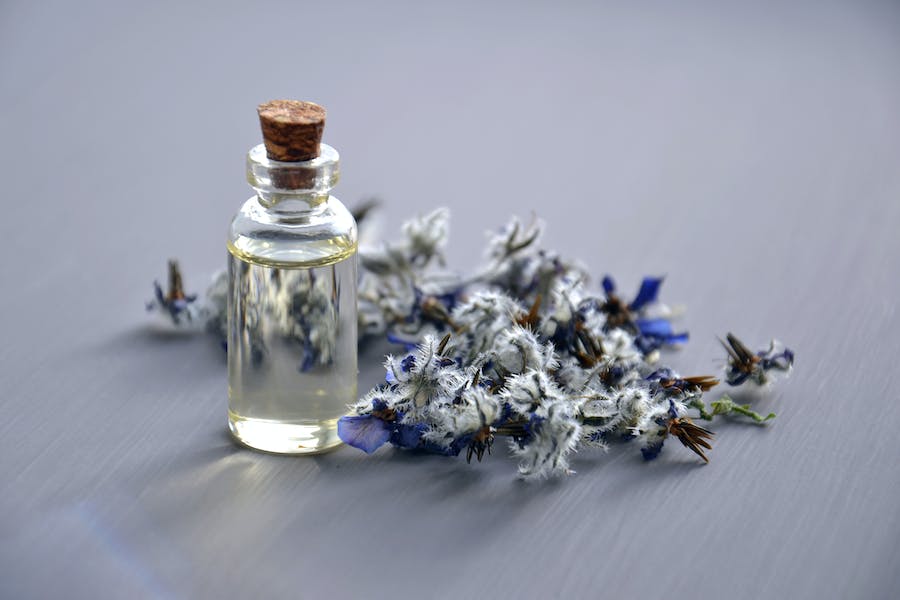Keloids are a common skin condition characterized by raised, often painful, and disfiguring scars that can result from injury or surgery. Finding effective treatments for these stubborn scars is a constant pursuit. One natural remedy that has gained attention in recent years is tea tree oil, derived from the Melaleuca alternifolia plant. Known for its potential antiseptic and anti-inflammatory properties, tea tree oil has sparked interest in its ability to mitigate the appearance and discomfort of keloids. This article delves into the science and practicality of using tea tree oil as a treatment for keloids, providing valuable insights and guidance for those seeking alternative solutions to these challenging scars.
Does Tea Tree Oil Help With Keloids?
While tea tree oil has some beneficial properties, its effectiveness in treating keloids is not well-established. It may help with itching and inflammation but is unlikely to completely resolve keloids. Consult a healthcare professional for a comprehensive treatment plan, which may include medical procedures like steroid injections or laser therapy for keloids.

Symptoms And Physical Appearance Of Keloids
Keloids are abnormal scars that can develop after skin injuries, such as surgical incisions, burns, acne, or even minor cuts. They have distinct symptoms and physical characteristics that set them apart from regular scars:
- Raised, Overgrown Tissue: One of the most defining features of keloids is their raised and overgrown nature. Unlike normal scars that tend to heal flat, keloids grow beyond the boundaries of the original injury. These raised masses of tissue can vary in size and shape, ranging from small lumps to larger, irregular formations.
- Red or Darkened Color: Keloids often appear red, pink, or darker than the surrounding skin. This discoloration is a result of increased blood flow and melanin production in the affected area. Over time, keloids may lighten in color but generally remain more noticeable than the surrounding skin.
- Itching and Discomfort: Keloids can be itchy and may cause discomfort or pain, especially when they are growing or exposed to friction. The itching can be a particularly bothersome symptom for individuals with keloids.
- Unpredictable Growth: Keloids can continue to grow slowly over time, making their development somewhat unpredictable. Some keloids may stop growing on their own, while others can become significantly larger over the years. This variability can make keloids emotionally distressing for individuals as they may not know what to expect.
How does Tea Tree Oil interact with Keloid Tissue?
- Anti-Inflammatory Properties: Tea tree oil contains compounds like terpinen-4-ol, which have known anti-inflammatory properties. Inflammation plays a role in the development and growth of keloids. Applying tea tree oil topically may help reduce inflammation in the affected area, potentially alleviating some of the discomfort associated with keloids.
- Antimicrobial Effects: Tea tree oil is recognized for its natural antiseptic and antimicrobial properties. Keeping the keloid area clean and free from potential infections, may aid in preventing complications and further irritation.
- Moisturizing and Softening: Some anecdotal reports suggest that tea tree oil when diluted and applied topically, can help moisturize and soften keloid tissue. This may make the keloid less stiff and reduce itching and discomfort.
- Scar Smoothing: Tea tree oil is sometimes used in combination with carrier oils, such as coconut or jojoba oil, to massage keloid scars. This massage may improve blood circulation and potentially help flatten the keloid’s raised appearance.
- Reduction in Redness: Tea tree oil’s anti-inflammatory properties may help reduce the redness often associated with keloids, making them appear less noticeable over time.
How To Use Tea Tree Oil For Keloid Treatment?
Using tea tree oil for keloid treatment should be done with caution and in a well-informed manner. Here’s a step-by-step guide on how to use tea tree oil for keloid treatment:
- Gather Your Supplies: Ensure it is 100% pure tea tree oil. Options include coconut oil, jojoba oil, or olive oil. Clean washcloth or cotton swabs. Clean, mild soap and water.
- Perform a Patch Test: Before using tea tree oil on your keloid, perform a patch test on a small, inconspicuous area of your skin to check for any adverse reactions or allergies. Wait 24 hours to ensure there is no irritation.
- Clean the Affected Area: Wash the keloid and the surrounding skin gently with mild soap and water. Pat it dry with a clean towel.
- Dilute the Tea Tree Oil: Tea tree oil should always be diluted with a carrier oil to avoid skin irritation. A common dilution ratio is 1-2 drops of tea tree oil to 1 tablespoon of carrier oil. Adjust the ratio if your skin is sensitive.
- Application: Using a clean cotton swab or your fingers, apply the diluted tea tree oil mixture directly to the keloid. Massage it in gently for a few minutes. Do this 2-3 times a day. Alternatively, you can soak a clean washcloth in warm water mixed with a few drops of tea tree oil and apply it as a warm compress to the keloid for 15-20 minutes. This can help soften the keloid.
- Be Patient: Results may not be immediate, and it may take several weeks or even months to see any improvement. Consistency is key.
- Monitor for Irritation: Watch for any signs of skin irritation, redness, or itching. If you experience any adverse reactions, discontinue use immediately and wash the area with water.
Other Natural Remedies And Treatments For Keloids
In addition to tea tree oil, several other natural remedies and treatments are often explored for managing keloids. It’s important to note that individual responses to these treatments can vary, and what works for one person may not work for another. Here are some alternative natural remedies and treatments for keloids:
- Aloe Vera: Aloe vera gel is known for its soothing and anti-inflammatory properties. Applying pure aloe vera gel to keloids may help reduce redness, itching, and inflammation.
- Honey: Honey has natural antibacterial properties and can be applied topically to keloids. Some people find that using honey helps soften and reduce the appearance of keloid scars.
- Lemon Juice: Lemon juice contains natural bleaching agents and vitamin C, which may help lighten the color of keloids over time. Apply lemon juice to the scar and let it sit for 10-15 minutes before rinsing it off.
- Onion Extract: Over-the-counter products containing onion extract, like Mederma, have been used to manage keloids. Onion extract may help reduce the size and appearance of keloids when applied as directed.
- Lavender Oil: Lavender oil has anti-inflammatory and skin-soothing properties. Diluted lavender oil can be applied to keloids as a part of massage therapy to help soften the tissue and improve appearance.
- Silicone Gel Sheets: Silicone gel sheets or silicone-based gels are available as over-the-counter products. They are designed to flatten and soften keloids when applied regularly.
- Sandalwood and Rose Water Paste: A paste made from sandalwood powder and rose water is believed by some to help reduce the size and redness of keloids. Apply the paste to the scar and leave it on for several hours before rinsing.
- Garlic Extract: Garlic has anti-inflammatory properties and may help reduce the appearance of keloids. Crush a garlic clove and apply the juice to the keloid, but be cautious as garlic may cause skin irritation in some individuals.
- Green Tea Extract: Green tea extract contains antioxidants that may help with inflammation. Applying a green tea extract ointment or gel may be beneficial for some keloid patients.
- Baking Soda Paste: Mixing baking soda with water to create a paste and applying it to the keloid can help exfoliate the skin and potentially reduce the appearance of the scar.
Conclusion
In conclusion, natural remedies like tea tree oil and other alternative treatments offer potential benefits in managing keloids, such as reducing inflammation and discomfort. However, individual responses vary, and complete resolution of keloids may not always be achieved. It is crucial to approach keloid treatment with patience and consult a healthcare professional for personalized guidance. For more significant or persistent keloids, medical interventions like steroid injections or laser therapy may be necessary to achieve optimal results.
FAQs
Can Tea Tree Oil Completely Eliminate Keloids?
No, tea tree oil may help alleviate some symptoms and improve the appearance of keloids, but it is unlikely to eliminate them.
Are There Any Side Effects Of Using Tea Tree Oil On Keloids?
Possible side effects include skin irritation, redness, and itching. Always dilute tea tree oil and perform a patch test before use.
How Long Does It Take To See Results When Using Tea Tree Oil On Keloids?
Results can vary, but it may take several weeks to months of consistent use to see any improvement in keloid appearance.
Can Natural Remedies Like Aloe Vera Or Honey Be Used Alongside Tea Tree Oil For Keloid Treatment?
Yes, these natural remedies can complement tea tree oil treatment. However, consult a healthcare professional for guidance on combining treatments.
What If Natural Remedies Don’t Work For My Keloids?
If natural remedies prove ineffective, consult a dermatologist or healthcare professional for more advanced treatment options like steroid injections, laser therapy, or surgical removal.





